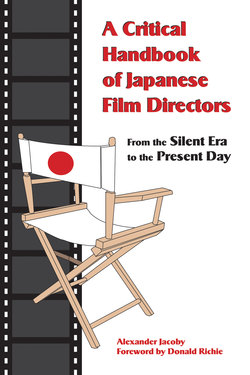Читать книгу A Critical Handbook of Japanese Film Directors - Alexander Jacoby - Страница 25
На сайте Литреса книга снята с продажи.
HASEGAWA Kazuhiko
Оглавление(b. January 5, 1946)
長谷川和彦
Hasegawa’s two features rank among the most provocative Japanese films to have emerged during the seventies. After some years spent at Nikkatsu as an assistant director and scriptwriter to Roman Porno directors such as Tatsumi Kumashiro, he made his debut, the ATG-produced Youth to Kill (Seishun no satsujinsha, 1976), an explosive account of a young man who murders his parents. Filming in a mixture of icy long takes and edgy montage, eliciting performances of devastating intensity from his actors, Hasegawa crafted a piercing study of alienation, fixed in the context of the disintegration of traditional Japanese family structures as the country modernized.
Three years later, at Toho, Hasegawa directed The Man Who Stole the Sun (Taiyō o nusunda otoko, 1979), about an eccentric science teacher who holds Tokyo to ransom with a nuclear bomb constructed in his flat. Although in its later scenes the film became a relatively conventional action movie, with car chases and implausible climactic twists, the early sequences, with their skillful balance of suspense and black comedy, were remarkable. Moreover, though some of the more gimmicky aspects of Hasegawa’s style now feel very much of their particular time, the theme of a lone individual armed with weapons of mass destruction seems unnervingly contemporary.
Hasegawa’s vision was extremely dark: his work focused on characters totally alienated from society. At the end of both his films, his anti-heroes have cheated death and eluded justice, but have no plausible future. Hasegawa hoped to continue his examination of people rebelling violently against conventional society with a project about the 1972 Asama Sansō Red Army hostage crisis; regrettably, this was never realized. Since the seventies, Hasegawa has devoted himself mainly to encouraging younger directors through his foundation of the Directors’ Company, though he also acted for Seijun Suzuki in Yumeji (1991). The power of his work, coupled with his subsequent unexpected retirement from cinema, has earned Hasegawa something of the cult status enjoyed in America by Terrence Malick, also the maker of two distinctive films during the seventies. Indeed, Youth to Kill had certain similarities in plot to Malick’s own debut, Badlands (1973). Sadly, Hasegawa, unlike Malick, has never subsequently returned to direction.
1976 Seishun no satsujinsha / Youth to Kill / Young Murderer
1979 Taiyō o nusunda otoko / The Man Who Stole the Sun
